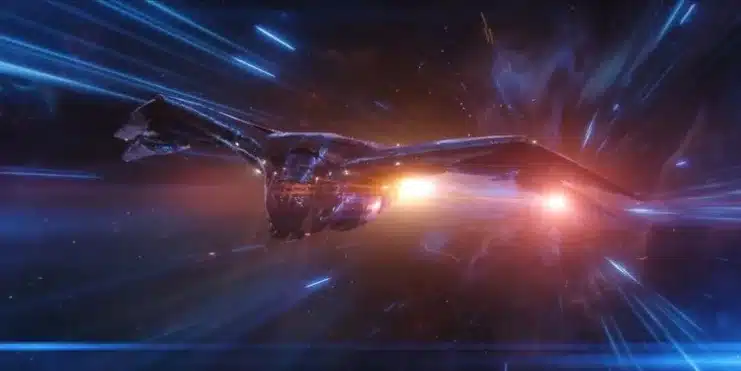
Sci-fi cinema is known to dazzle us with colorful special effects and dystopian stories, but sometimes, many of these claims fall short on their scientific basis.
At the heart of the space odysseys and intergalactic sagas that have captivated generations from “Star Wars” to “Star Trek” is the balancing act between fantasy and scientific accuracy. This game is supported by wonder, often sacrificing scientific rigor on the altar of entertainment. It’s a delicate dance that invites both admiration and scrutiny, especially when the laws of physics are bent to the point of belief.

Gravity and speed of light
The idea that every exoplanet shares the same gravity as Earth eases the backdrop of epic scenes, allowing heroes and villains to move with familiarity regardless of the celestial sphere beneath their feet. Imagine, for a moment, that the inhabitants of Tatooine are constantly in high gravity, with muscles as thick as steel, or slender, frail creatures on low-gravity worlds. However, the reality is that gravity varies greatly from planet to planet, a fact that is often overlooked on the big screen.
Faster-than-light travel, a cornerstone of science fiction, presents a clear contradiction to Einstein’s theory of relativity. While the narrative of franchises like the MCU rests on the possibility of crossing galaxies in the blink of an eye, scientific reality offers less optimism. While some sagas have ingenious solutions, such as wormholes or spatial bending, the possibility of overcoming this fundamental obstacle now seems relegated to the realm of fantasy.
Teleport and atmosphere
Teleport, seen in films such as “The Fly,” promises a world where distances dissolve and spatial boundaries dissolve. However, the complexity of organic life and the magnitude of replication at a distance pose unresolved challenges. While teleportation of subatomic particles is a reality, the leap to teleportation of all living beings remains a distant dream.


Images of aliens breathing easily on Earth, or images of humans endlessly exploring distant planets, underestimate the diversity of the universe’s atmosphere. Adaptation of life to certain environments means that atmospheric composition and pressure suitable for one species may be fatal for another. This narrative oversight ignores the complexities of exoplanetary biology and evolutionary adaptations.
Invisible and sound in space
The concept of invisibility, explored in stories from ancient Greek mythology to modern movies, faces an insurmountable obstacle: vision depends on the light captured by the retina. An invisible being would, in theory, be blind because light must pass through it without interference. This paradox illustrates the distance between humanity’s desire for superpowers and the constraints imposed by the laws of physics.
Space battles, with their explosive explosions and spectacular flashbacks, have become a much-anticipated spectacle for science fiction fans. However, in the vacuum of space, with no oxygen to fuel the fire or a way to transmit sound, these explosions tend to be quieter and less spectacular. This deviation from reality is a reminder that, in cinema, spectacle often undermines authenticity.
Communication and light travel
Fast communication over vast distances of space collides with the constant speed limit of light. Films like “Contact” and “The Martian” have tackled this challenge with varying degrees of success, recognizing the delays in interplanetary communication. This challenge reveals the tension between the narrative’s need for immediate communication and the constraints imposed by the laws of physics.


The idea of intergalactic travel found in works such as the “Ahsoka” television series ignores the vast temporal and spatial scales that separate these vast interstellar islands. The reality of these reciprocal journeys, measured not in years but in millions of years, raises profound questions about time, space, and our own existence in the cosmos.
Echoes of the unexplored universe
As science fiction continues to challenge the limits of our imagination, it reminds us of the vastness of the universe and the relentless pursuit of knowledge. Although the laws of physics place limits on what we can achieve, the human spirit, driven by curiosity and wonder, continues to explore the possibilities.